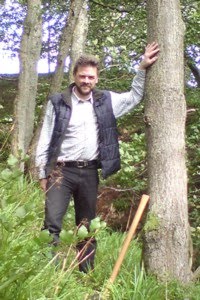 I am going to tell you a secret. It is older, deeper, and infinitely more real than anything dreamt up by Dan Brown. Granted, it involves masons, pyramids, and ancient secrets, all the usual suspects. But don’t be alarmed, I am a field archaeologist, and we dig through the brown stuff all the time, and dark forces tend to cross the street to avoid us.
I am going to tell you a secret. It is older, deeper, and infinitely more real than anything dreamt up by Dan Brown. Granted, it involves masons, pyramids, and ancient secrets, all the usual suspects. But don’t be alarmed, I am a field archaeologist, and we dig through the brown stuff all the time, and dark forces tend to cross the street to avoid us.Secrets
The use of the word secret to describe undiscovered archaeology is nothing more than as simple truism, but it serves to heighten the sense of mystery, which I am happy to invoke in a spirit of ironic, but gratuitous, hypocrisy.




















